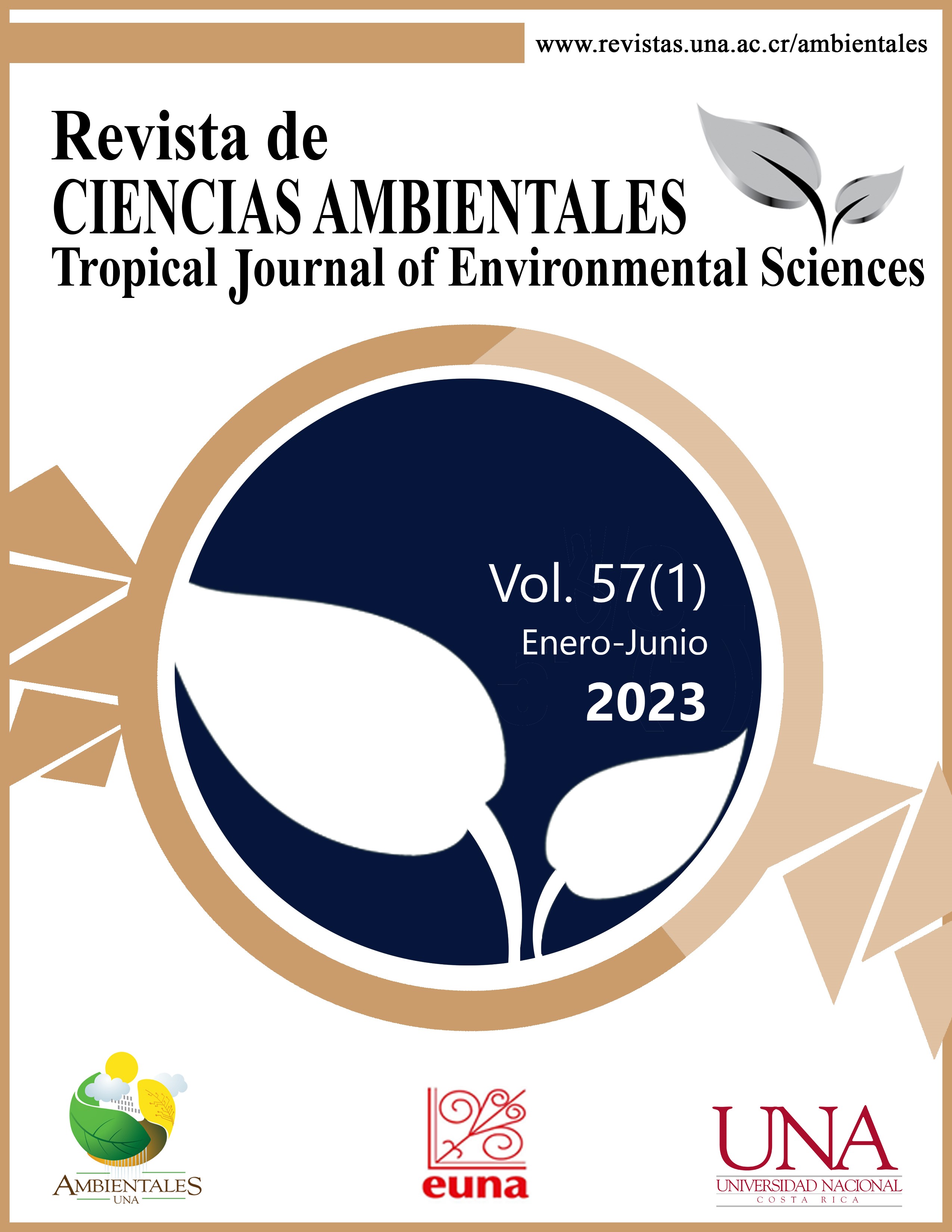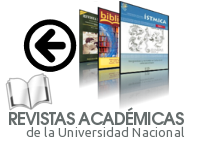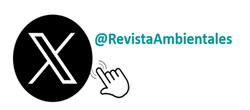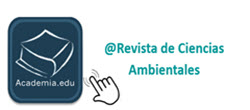Opportunity cost of natural forest management in the Arenal-Huetar Norte Conservation Area, Costa Rica.
DOI:
https://doi.org/10.15359/rca.57-1.10Keywords:
Conservation planning; opportunity cost; forest management; landscape mapping.Abstract
[Introduction]: Part of the success of conservation programs is focused on the economic sustainability that they provide to the people who own the forests, within an increasingly aggressive productive landscape matrix. However, currently the economic relationship between land uses and their respective productive activities lacks empirical data to explain it. [Objective]: This study designed a model to evaluate the opportunity cost of forest management in natural forests, taking as a reference the primary productive activities that take place in its surroundings. [Methodology]: A data set of 24 sites with a forest management plan in natural forest, approved by the forest authorities of the Arenal-Huetar Norte Conservation Area, Costa Rica, was used. Likewise, geographic and productive information on alternative land uses was used. [Results]: With these data, an opportunity cost map was generated, which shows a marked segregation of the forests into 2 main zones: a) high opportunity cost zone, located to the south of the study area, with a range of $1,000.0 to ≥ $4,000.0 ha-1 yr-1; and b) medium zone and zone of low cost of opportunity, to the center-north of the site of interest, with a range of ≤ $0 to $1 000.0 ha-1 year-1. [Conclusions]: It is concluded that, at present, the ideal areas for timber harvesting are restricted to places far from the market and characterized by their low opportunity cost.
References
Adams, V.M., Pressey, R.L., y Naidoo, R. (2010). Opportunity costs: Who really pays for conservation? Biological Conservation, 143(2), 439–448. https://doi.org/10.1016/j.biocon.2009.11.011
Andrew, C.E., y Bariweni, P.A. (2018). Opportunity Costs of Forest Conservation in Wilberforce Island, Niger Delta, Nigeria. Journal of Applied Sciences & Environmental Management, 22(12), 1965–1968. https://doi.org/10.4314/jasem.v22i12.16
Barbier, E. (2001). The Economics of Tropical Deforestation and Land Use: An Introduction to the Special Issue. Land Economics, 77(2), 155-171. https://doi.org/10.2307/3147087
Bryan, B.A., King, D., y Ward, J.R. (2011). Modelling and mapping agricultural opportunity costs to guide landscape planning for natural resource management. Ecological Indicators, 11(1), 199–208. https://doi.org/10.1016/j.ecolind.2009.02.005
Camacho, AM. (2014). Superficie de bosque susceptible de manejo forestal en Costa Rica y estimulación de su potencial productivo. FONAFIFO – REED+. https://onfcr.org/wp-content/uploads/media/uploads/documents/estimacion-bosques-para-mfs-en-cr.pdf
Camacho, AM. (2015). Diagnóstico corto sobre las barreras que desalientan el manejo de bosques naturales en Costa Rica y propuesta de solución. FONAFIFO – REED+. https://onfcr.org/wp-content/uploads/media/uploads/documents/diagnostico-corto-mfs-bosques-en-cr.pdf
Castro, R. (1999). Los servicios ambientales de los bosques: el caso del cambio climático. PNUD. https://catalogosiidca.csuca.org/Record/UCR.000180624/Details
Contraloría General de la República. (2011). Informe acerca de los efectos del Programa Pago por Servicios Ambientales (PSA) implementado por el Estado Costarricense. Contraloría General de la República. https://cgrfiles.cgr.go.cr/publico/docs_cgr/2011/SIGYD_D_2011008845.pdf
Decreto N° 38323 de 2014 [Ministerio de Ambiente y Energía]. Por la cual se establece el Pago por Servicios Ambientales para el año 2014. 14 abril de 2014. https://www.fonafifo.go.cr/media/1346/decreto-38323.pdf
Environmental Systems Research Institute [ESRI]. (03 febrero 2020). Cómo funciona Estadísticas focalizadas. ArcGIS for Desktop. http://desktop.arcgis.com/es/arcmap/10.3/tools/spatial-analyst-toolbox/how-focal-statistics-works.htm
Ferraro, P.J. (2003). Assigning Priority to Environmental Policy Interventions in a Heterogeneous World. Journal of Policy Analysis and Management, 22(1), 27–43. https://doi.org/10.1002/pam.10094
Food and Agriculture Organization [FAO]. (2016). Evaluación de los recursos forestales mundiales 2015: ¿Cómo están cambiando los bosques del mundo? FAO. https://www.fao.org/3/i4793s/i4793s.pdf
Instituto Nacional de Estadística y Censo [INEC]. (2014). VI Censo Nacional Agropecuario 2014: Información de cultivos anuales, permanentes, forestales, pastos y actividades pecuarias de los distritos Pital, Cutris y Florencia de San Carlos, y Cureña de Sarapiquí. INEC.
Kniivilä, M., y Saastamoinen, O. (2002). The opportunity costs of forest conservation in a local economy. Silva Fennica, 36(4). https://doi.org/10.14214/sf.526
Leguia, J.D. (2013). Estimación de los Costos de Oportunidad: reporte metodológico Ecuador. Programa Nacional Conjunto ONUREDD – Ecuador (PNC ONUREDD). https://info.undp.org/docs/pdc/Documents/ECU/IR_COSTOS_DE_OPORTUNIDAD_v11.pdf
Malky, A., Leguia, D., y Ledezma, J.C. (2012). Análisis del costo de oportunidad de la deforestación evitada en el noreste amazónico de Bolivia. Conservation Strategy Fund. https://www.conservation-strategy.org/sites/default/files/field-file/CSF_Malky_Leguia_Ledezma.pdf
Naidoo, R., y Adamowicz, W.L. (2006). Modeling Opportunity Costs of Conservation in Transitional Landscapes. Conservation Biology, 20(2), 490–500. https://doi.org/10.1111/j.1523-1739.2006.00304.x
Nakajima, T., Kanomata, H., Shiraishi, N., y Matsumoto, M. (2017). Development and analysis of an opportunity cost simulation accounting for the spatial distributions of local forest management. Annals of Forest Research, 60(1), 145–159. https://doi.org/10.15287/afr.2016.770
Nalle, D., Montgomery, C., Arthur, J., Polasky, S., y Schumaker, N. (2004). Modeling joint production of wildlife and timber. Journal of Environmental Economics and Management, 48, 997–1017. https://doi.org/10.1016/j.jeem.2004.01.001
Navarro, G., y Bermúdez, G. (2006). Análisis económico del impacto de las restricciones técnicas y legales sobre la rentabilidad del manejo bosques naturales y su competitividad respecto a otros usos de la tierra en Costa Rica. SINAC-FAO. https://www.fao.org/forestry/12924-05025d5e690b91036419c00100747b1cb.pdf
Oficina Nacional Forestal [ONF]. (2021). Usos y aportes de la Madera en Costa Rica: Estadísticas 2020 & Precios 2021. Mundo Creativo S.A. https://onfcr.org/usos-y-aportes-de-la-madera-en-costa-rica
Organización para la Cooperación y el Desarrollo Económicos [OECD], Fundación de la Universidad de Costa Rica para la Investigación [FUNDEVI]. (2017). Interacciones entre Políticas Públicas, Migración y Desarrollo en Costa Rica. OECD. https://www.ucr.ac.cr/medios/documentos/2017/informe_pais_costa-rica.pdf
Ortiz, E., Mendez, A., Gomez, A., Villavicencio, D., Solano, M., y Ortega, N. (2013). Tipos de Bosque 2012 INFv5 [Data set]. REDD–CCAD–GIZ.
Pagiola, S., y Bosquet, B. (2010). Estimando los costos de REDD a nivel de país. Forest Carbon Partneship Facility. https://www.forestcarbonpartnership.org/sites/fcp/files/fcp-docs/2014/June/Estimating%20the%20Costs%20of%20REDD%20at%20the%20Country%20Level-spanish_0.pdf
Polasky, S., Nelson, E., Lonsdorf, E., Fackler, P., y Starfield, A. (2005). Conserving Species in a Working Landscape: Land Use with Biological and Economic Objectives. Ecological Applications, 15(4), 1387–1401. https://doi.org/10.1890/03-5423
Sierra, R., Cambronero, A., y Vega, E. (2016). Patrones y factores de cambio de la cobertura forestal natural de Costa Rica, 1987-2013. Fondo Cooperativo para el Carbono de los Bosques. http://reddcr.go.cr/sites/default/files/centro-de-documentacion/rsierraacambroneroevega_patrones_y_factores_cus.pdf
Sistema Nacional de Áreas de Conservación [SINAC]. (2013). Reporte Estadístico Forestal 2013. GIZ.
Soler, R., Lorenzo, C., González, J., Carboni, L., Delgado, J., Díaz, M., Toro. & Herrera, H. (2021). The politics behind scientific knowledge: Sustainable Forest management in Latin America. Forest Policy and Economics, 131, 1-9. https://doi.org/10.1016/j.forpol.2021.102543
Ugalde, S. (ed.). (2017). Escenarios de productividad para Melina y Teca. Oficina Nacional Forestal.
Vega-Araya, E. 2014. Desarrollo de un modelo de montos diferenciados de PSA considerando el costo de oportunidad asociado al uso de la tierra. Informe Final. Informe realizado para FONAFIFO.
White, D., y Minang, P. (2011). Estimación de los Costos de Oportunidad de REDD+: Manual de Capacitación. Fondo Cooperativo para el Carbono de los Bosques. https://www.forestcarbonpartnership.org/system/files/documents/Costos_de_Oportunidad_de_REDD_Plus_ver_1.4_Agosto_2011_Reduced.pdf
Zúñiga, C. (2018). Rentabilidad del aprovechamiento maderable de los planes de manejo aprobados en el periodo 2010 – 2013 y su efecto en el costo de oportunidad de la tierra, para el Área de Conservación Arenal – Huetar Norte, Costa Rica. [Tesis licenciatura, Universidad Nacional]. Repositorio UNA. https://repositorio.una.ac.cr/handle/11056/18143
Published
How to Cite
Issue
Section
License

This work is licensed under a Creative Commons Attribution-NonCommercial-ShareAlike 4.0 International License.



















